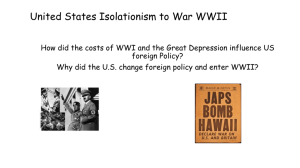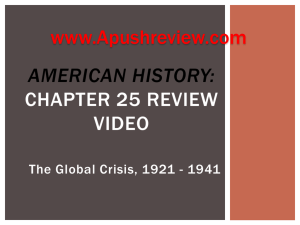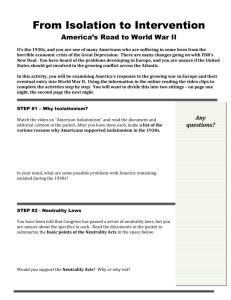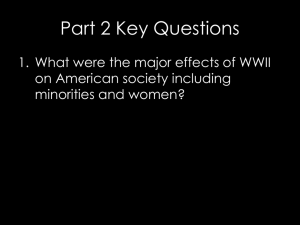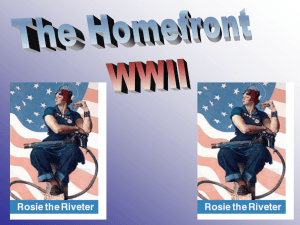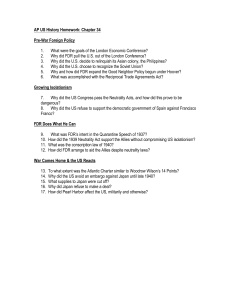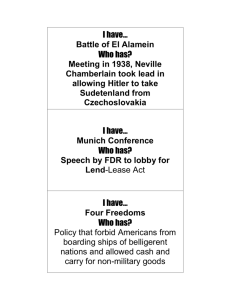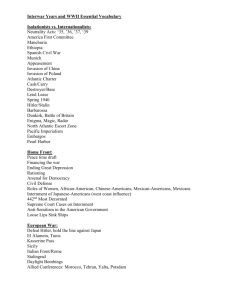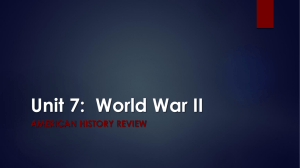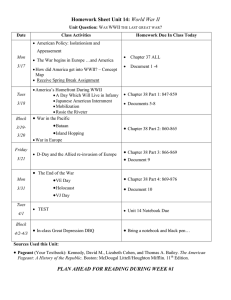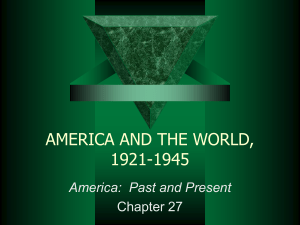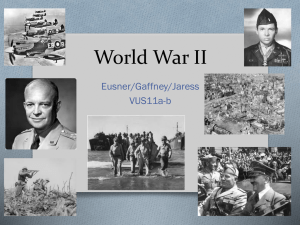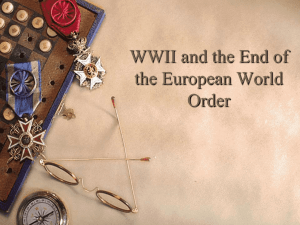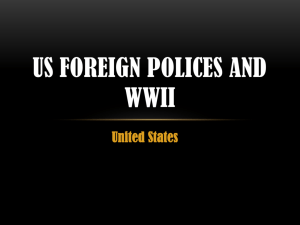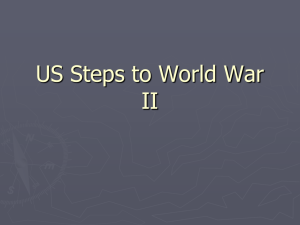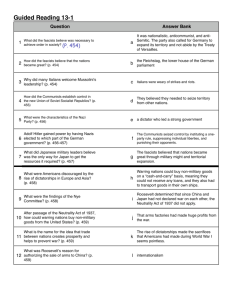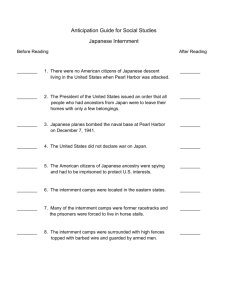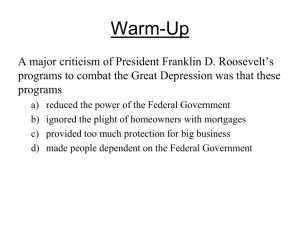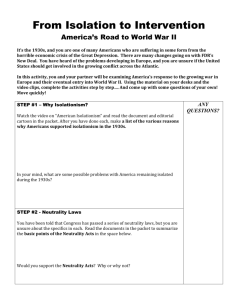APUSH Name: Date: AMSCO Chapter #25- WWII, 1929
advertisement
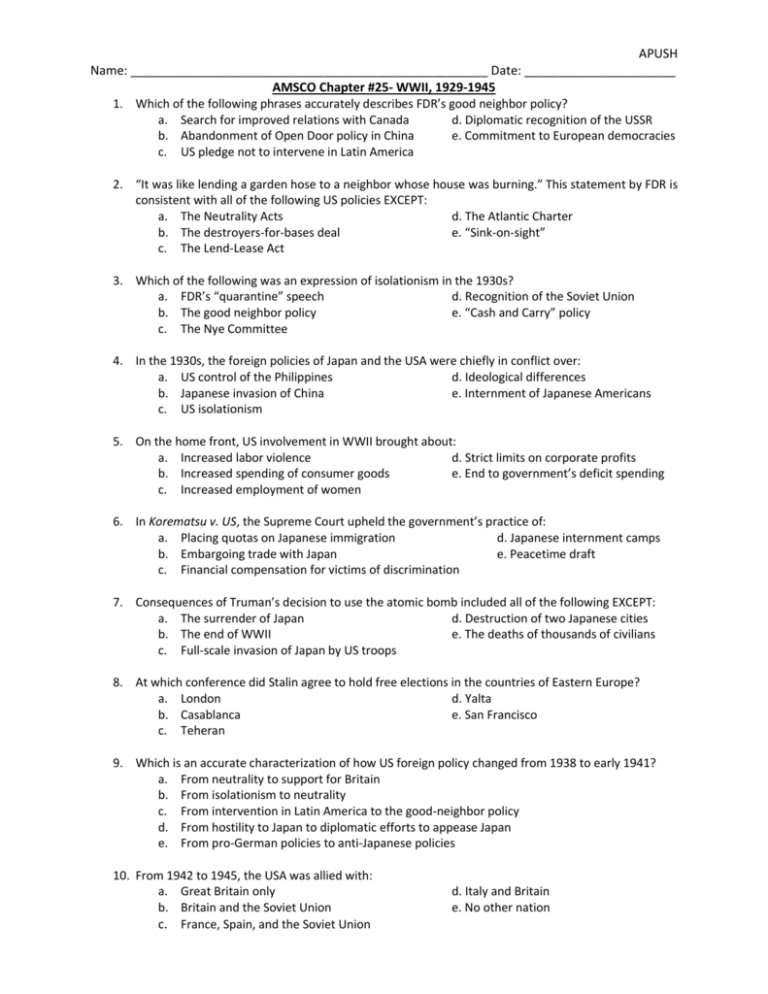
APUSH Name: ____________________________________________________ Date: ______________________ AMSCO Chapter #25- WWII, 1929-1945 1. Which of the following phrases accurately describes FDR’s good neighbor policy? a. Search for improved relations with Canada d. Diplomatic recognition of the USSR b. Abandonment of Open Door policy in China e. Commitment to European democracies c. US pledge not to intervene in Latin America 2. “It was like lending a garden hose to a neighbor whose house was burning.” This statement by FDR is consistent with all of the following US policies EXCEPT: a. The Neutrality Acts d. The Atlantic Charter b. The destroyers-for-bases deal e. “Sink-on-sight” c. The Lend-Lease Act 3. Which of the following was an expression of isolationism in the 1930s? a. FDR’s “quarantine” speech d. Recognition of the Soviet Union b. The good neighbor policy e. “Cash and Carry” policy c. The Nye Committee 4. In the 1930s, the foreign policies of Japan and the USA were chiefly in conflict over: a. US control of the Philippines d. Ideological differences b. Japanese invasion of China e. Internment of Japanese Americans c. US isolationism 5. On the home front, US involvement in WWII brought about: a. Increased labor violence d. Strict limits on corporate profits b. Increased spending of consumer goods e. End to government’s deficit spending c. Increased employment of women 6. In Korematsu v. US, the Supreme Court upheld the government’s practice of: a. Placing quotas on Japanese immigration d. Japanese internment camps b. Embargoing trade with Japan e. Peacetime draft c. Financial compensation for victims of discrimination 7. Consequences of Truman’s decision to use the atomic bomb included all of the following EXCEPT: a. The surrender of Japan d. Destruction of two Japanese cities b. The end of WWII e. The deaths of thousands of civilians c. Full-scale invasion of Japan by US troops 8. At which conference did Stalin agree to hold free elections in the countries of Eastern Europe? a. London d. Yalta b. Casablanca e. San Francisco c. Teheran 9. Which is an accurate characterization of how US foreign policy changed from 1938 to early 1941? a. From neutrality to support for Britain b. From isolationism to neutrality c. From intervention in Latin America to the good-neighbor policy d. From hostility to Japan to diplomatic efforts to appease Japan e. From pro-German policies to anti-Japanese policies 10. From 1942 to 1945, the USA was allied with: a. Great Britain only b. Britain and the Soviet Union c. France, Spain, and the Soviet Union d. Italy and Britain e. No other nation
